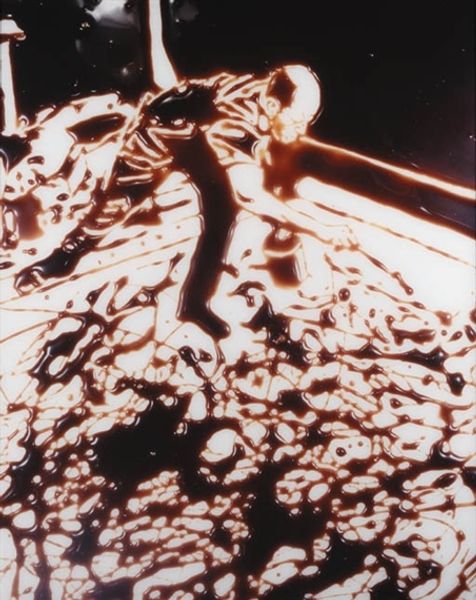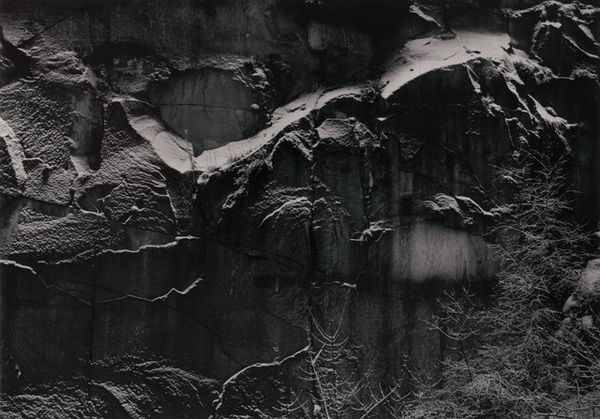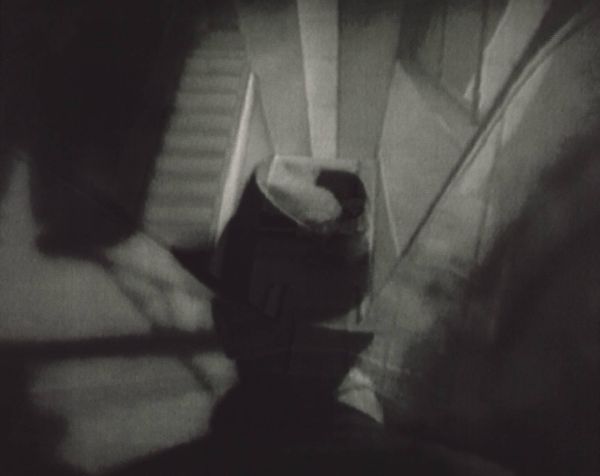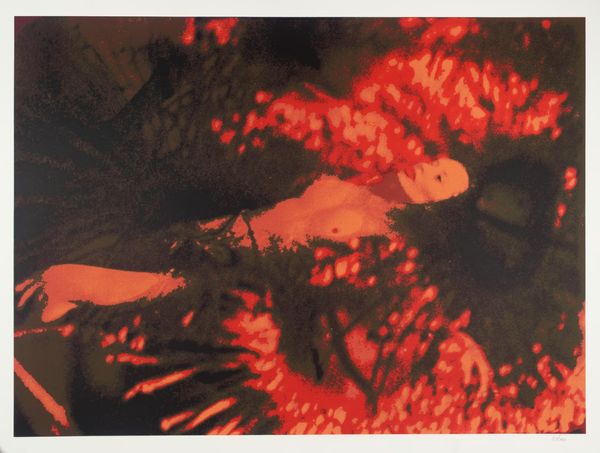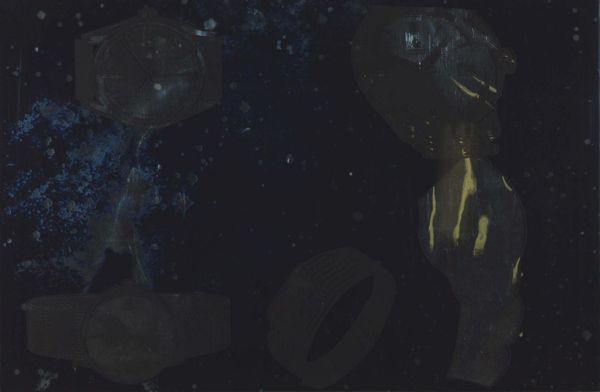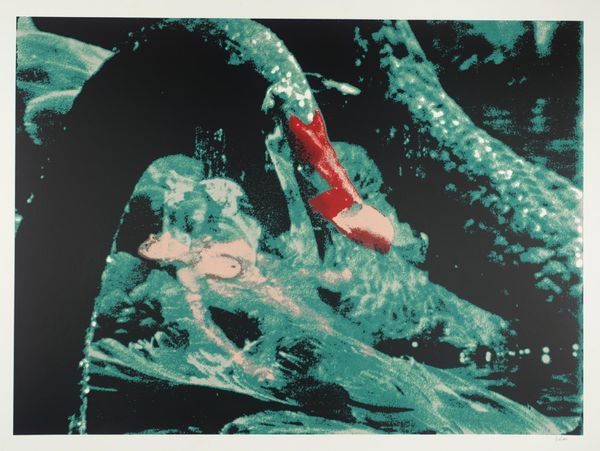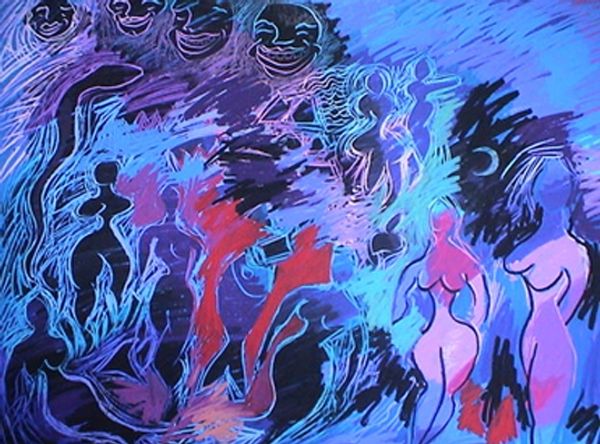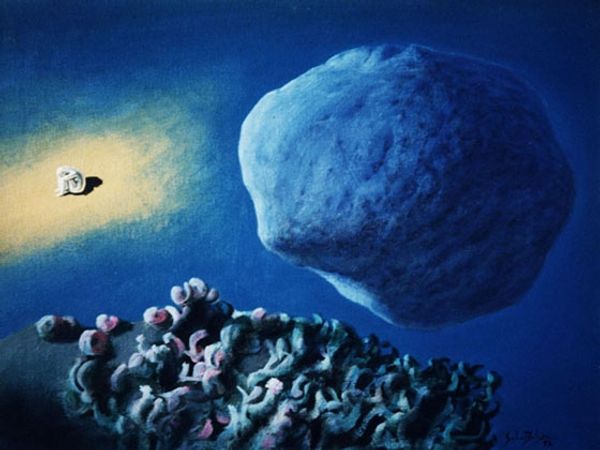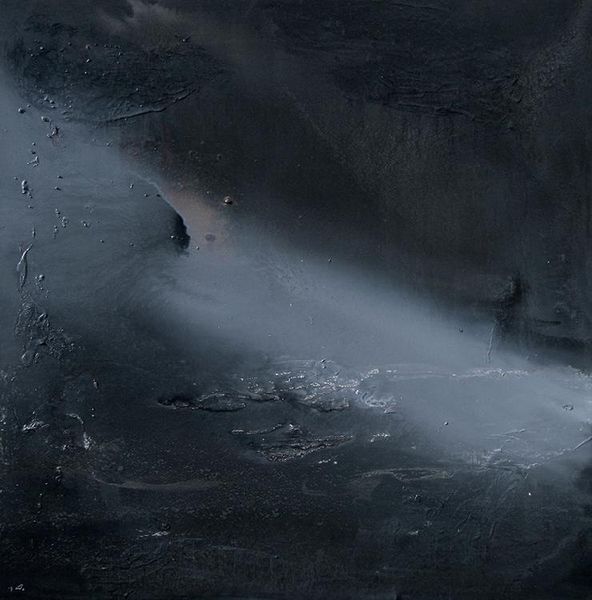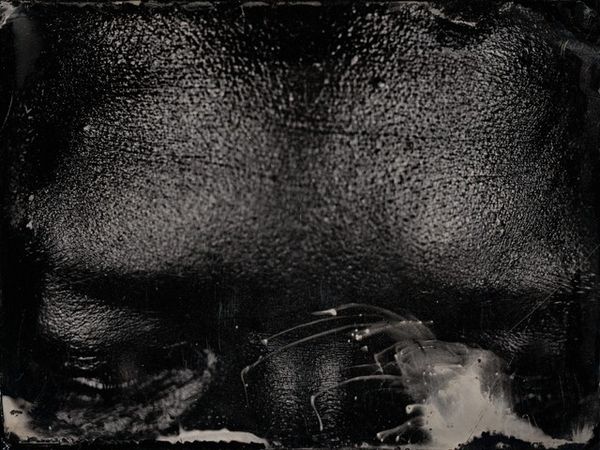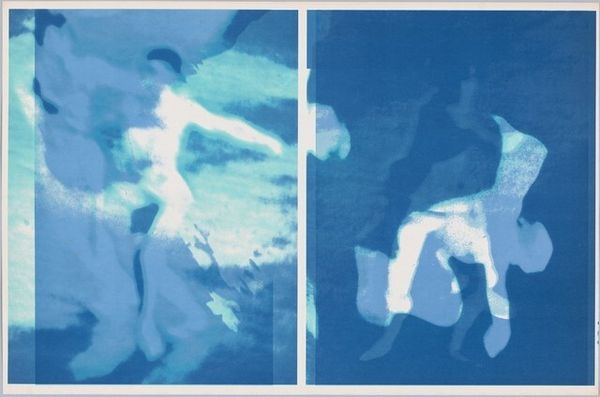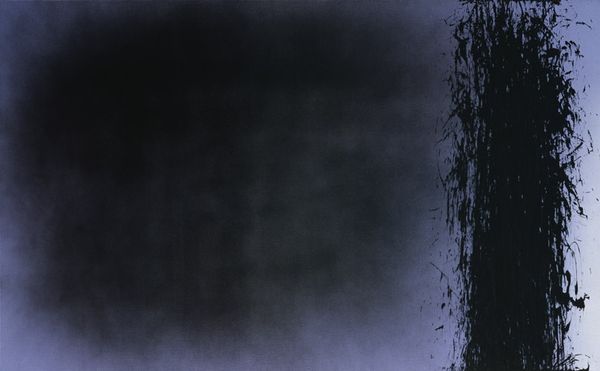
Dimensions: duration: 29 min., 46 sec.
Copyright: © Bill Viola Studio | CC-BY-NC-ND 4.0 DEED, Photo: Tate
Curator: Bill Viola's "Nantes Triptych," currently held in the Tate Collections, presents a meditation on life, death, and transition through video. What strikes you initially about its composition? Editor: It’s haunting. The triptych form, usually associated with religious painting, contrasts sharply with the rawness of birth, a submerged figure, and the stark reality of death. I wonder about the technical process here, the resources needed. Curator: Precisely. The triptych format offers a poignant framework, suggesting an inherent structure to existence. Viola employs the language of classical art to frame very contemporary, bodily experiences. Editor: The central panel, with the figure suspended in water, seems to be about baptism or purification, but it’s the physicality of the moving image, the apparatus, and the performative aspect that holds my attention. Curator: Agreed. It’s a potent symbolic gesture using the very stuff of digital technology, framing the human experience as a cycle. Editor: Ultimately, it's the labor and technology combined that amplify these themes. Seeing the artist's labor reflected in the images enriches the viewing. Curator: Yes. Viola's work encourages a broader consideration of existence, where the form and the material converge. Editor: I concur. A thoughtful use of process to elevate existential commentary.
Comments
Join the conversation
Join millions of artists and users on Artera today and experience the ultimate creative platform.
tate 7 months ago
⋮
The Nantes Triptych was originally conceived as a commission for the Centre National des Arts Plastiques in France, to be shown in a seventeenth-century chapel in the Musée des Beaux Arts in Nantes in 1992. Viola has taken the form of the triptych, traditionally used in Western art for religious paintings, to represent, through the medium of video, his own contemporary form of spiritual iconography. The three panels of Viola’s triptych show video footage of birth (on the left), death (on the right) and a metaphorical journey between the two represented by a body floating in water (in the centre). The footage used was not originally shot for this particular project. The birth was inspired by the birth of Viola’s first son in 1988 (although it does not depict his son’s birth) and was filmed at a natural childbirth clinic in California. The artist has used this footage in several works. The floating body in the central panel was filmed in a swimming pool for an earlier work, The Passing (1987–88). Viola filmed his mother as she lay dying in a coma in 1991 as a means of confronting her death artistically. The three passages are accompanied by a soundtrack of crying, water movement and breathing in a 30-minute loop. In this compacted space birth and death eclipse the dreamy suspension which represents, in the central panel, the thinking, active human life. Here it is not life’s journey which is important, but its beginning and end.
